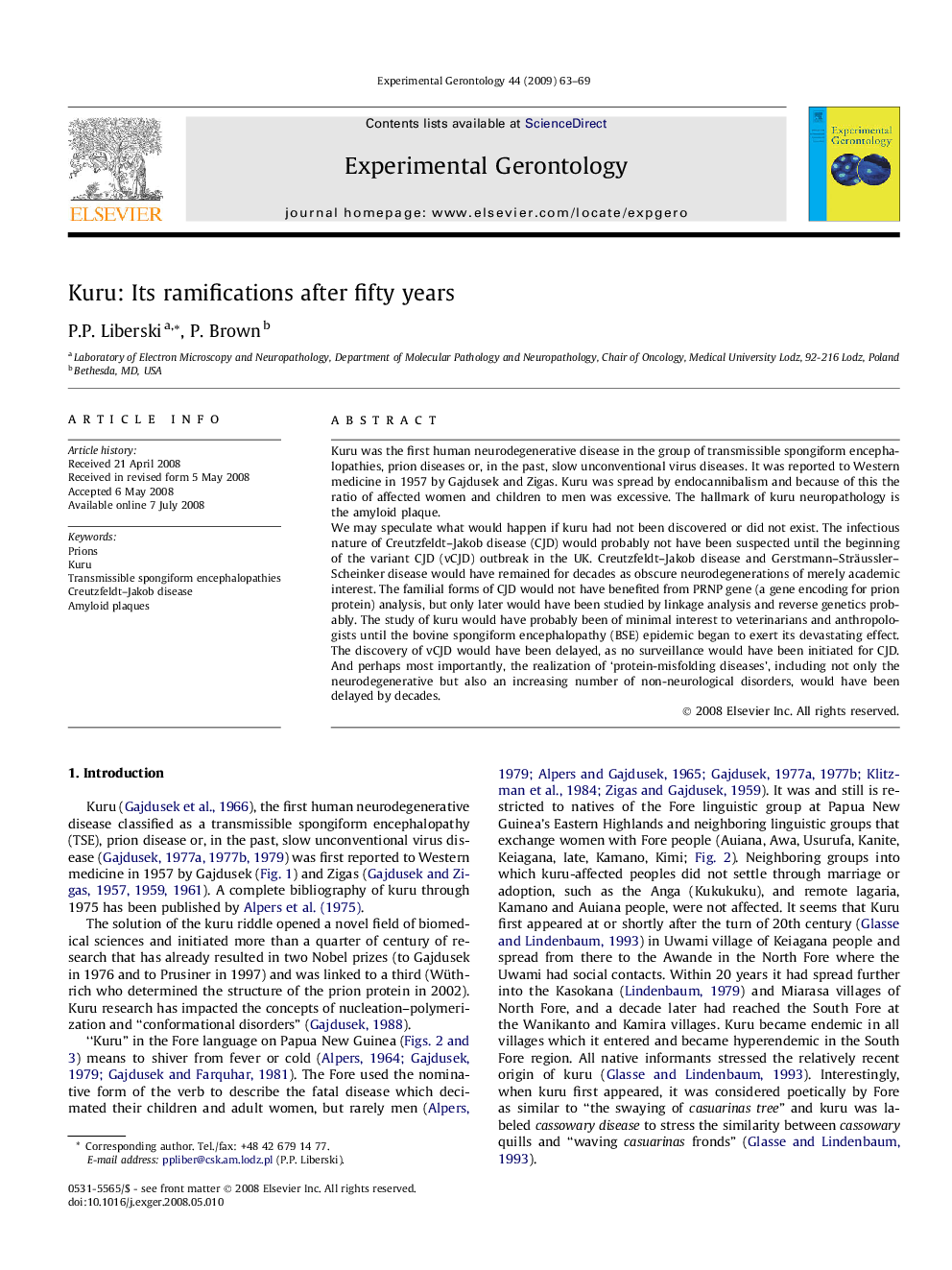| کد مقاله | کد نشریه | سال انتشار | مقاله انگلیسی | نسخه تمام متن |
|---|---|---|---|---|
| 1907021 | 1534896 | 2009 | 7 صفحه PDF | دانلود رایگان |

Kuru was the first human neurodegenerative disease in the group of transmissible spongiform encephalopathies, prion diseases or, in the past, slow unconventional virus diseases. It was reported to Western medicine in 1957 by Gajdusek and Zigas. Kuru was spread by endocannibalism and because of this the ratio of affected women and children to men was excessive. The hallmark of kuru neuropathology is the amyloid plaque.We may speculate what would happen if kuru had not been discovered or did not exist. The infectious nature of Creutzfeldt–Jakob disease (CJD) would probably not have been suspected until the beginning of the variant CJD (vCJD) outbreak in the UK. Creutzfeldt–Jakob disease and Gerstmann–Sträussler–Scheinker disease would have remained for decades as obscure neurodegenerations of merely academic interest. The familial forms of CJD would not have benefited from PRNP gene (a gene encoding for prion protein) analysis, but only later would have been studied by linkage analysis and reverse genetics probably. The study of kuru would have probably been of minimal interest to veterinarians and anthropologists until the bovine spongiform encephalopathy (BSE) epidemic began to exert its devastating effect. The discovery of vCJD would have been delayed, as no surveillance would have been initiated for CJD. And perhaps most importantly, the realization of ‘protein-misfolding diseases’, including not only the neurodegenerative but also an increasing number of non-neurological disorders, would have been delayed by decades.
Journal: Experimental Gerontology - Volume 44, Issues 1–2, January–February 2009, Pages 63–69